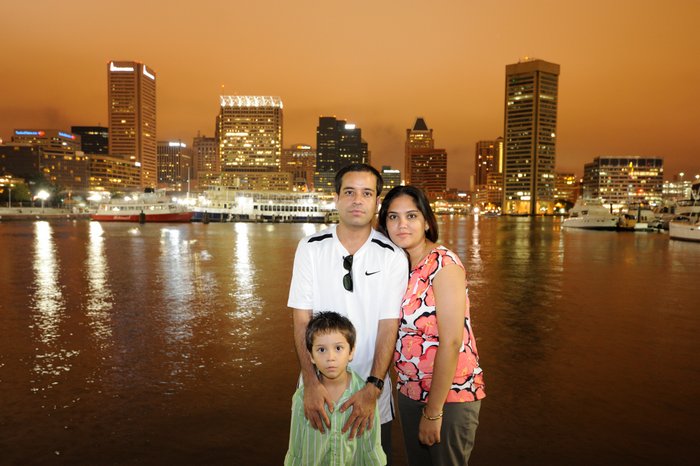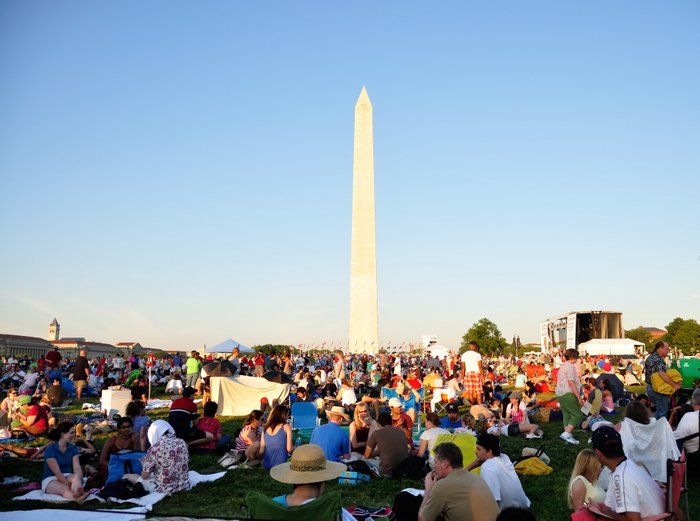Nikon DSLR cameras come with the five different shutter sync modes to work with the flash. Not all the exposure modes (S, A, P or M) come with the same flash sync modes but they are available in a slightly different variation depending on which exposure modes you are on. You might want to check your camera manual to find out which sync mode is available in which exposure mode. To change the flash sync mode in your camera, you can hold down the flash button (usually on the front left side of the camera body near the built-in pop-up flash unit) and rotate the main command dial. When I was first learning about these different types of sync modes, they sounded very confusing to me. After reading lots of articles and doing lots of practice on my camera and flash, I got the hang of it. If you are new to flash photography, I am sure it sounds confusing at the beginning. It is simple concept to understand yet confusing sometimes but let me explain them briefly and as clearly as I can. And if you already know about these modes and experimenting a lot with the flash, this might be a topic of interest to you as well.
1. Front Curtain Sync (Normal Sync) - In this mode, camera fires the flash as soon as the front shutter curtain (or first curtain) has been fully raised. It means camera fires the flash as soon as the window for the exposure is opened. Sometimes, it is also called firing the flash at the beginning of the exposure. When your camera is set to the Front curtain sync mode, the slowest (minimum) shutter speed it uses is 1/60th of a second (default to most of the DSLRs which you can change later by going into Flash shutter Speed menu inside the Custom Menu). This shutter speed is also called "Flash Shutter Speed". If your subject is in a low light condition, flash would be the only light for the exposure since the faster shutter speed cuts the ambient light. But if you are shooting with the Normal sync in a bright day light in an Aperture priority mode, your camera will try to use the fastest (maximum) shutter speed defined in "Sync Speed" which is usually 1/250th of a second. If you need a faster shutter speed than the sync speed, you will have to setup an Auto FP High Speed Sync which allows to sync your flash up-to 1/8000th of a second.
Front Curtain Normal Sync
Normally, you should use the Front Curtain Sync when your subject is in a dark condition and flash is the only source of light and you don't care too much about the background. It is also widely used for standard studio setup where your only source of light is the flash light or the studio strobe.
2. Red-eye Sync with Front Curtain - Have you ever noticed a red-eye effect while shooting a portrait? Usually, red-eye is caused by the light from the flash reflecting off the back of your subject's retina. When you are shooting close and with a straight flash, pop-up flash for example, it is very likely that you get the red-eye effect. And if your subject is in dark, red-eye gets worse because of the increased size of the subject's pupils (pupils get bigger to be able to see in the dark).
When you use the red-eye sync mode, depending on which flash system you are working with, camera will try to overcome the issue with a different technique. If you are using an external flash unit, camera fires series of quick light pulse just before the shutter opens. And if you are using a built-in pop-up flash, red-eye reduction is accomplished by illuminating camera's red-eye lamp, which is very bright and might be annoying to the subject. The best way to reduce the red-eye effect is by moving the flash unit away from the camera by using cords or wireless technology.
3. Slow Sync - Slow Sync mode allows you to use the flash to expose your main subject while getting the ambient light to expose the background or surroundings. The standard Slow Sync mode is the front curtain sync mode in which camera fires the flash at the beginning of the exposure and then keeps the shutter open for the ambient light exposure. Normal Slow Sync or Front Slow sync is used mainly when your subject is stationary. For example, if your subject is standing still in front of a building at night, you want to use the normal slow sync to illuminate the subject with the flash and then the shutter will be opened for the ambient exposure to illuminate the background.
Slow Sync Flash Photography
If your subject moves during the exposure, you will get the motion blur due to the long exposure.
Using Slow Sync Normal Flash (ball was moving from the right to the left)
In this mode, since the flash is fired at the beginning of the exposure, it freezes the subject initially but if the subject starts moving while the shutter is still open to capture the ambient light, it produces a motion blur after subject is initially being frozen. Sometimes this can produce an interesting picture with the motion blur but it could be a distraction as well. So, you have to be really careful while using this mode for a moving subject.
4. Slow+Red-eye Reduction Sync - This is a slight variation on the Red-eye reduction sync we discussed earlier. In this mode, flash fires at the beginning of the exposure freezing your subject and keep the shutter open for the ambient exposure. Since this mode is similar to the Normal Sync where flash fires as soon as the shutter is opened, red-eye reduction sync works exactly same as the previous case.
You should use this mode when you want to use on-camera pop-up flash to illuminate the subject and keep the background lit with the slower shutter speed by capturing the ambient light. The problem with this mode can be similar to that of slow sync mode where if subject moves right after the flash is fired, you get the motion blur due to the longer exposure setting (shutter is kept opened after the flash is fired for the exposure).
5. Slow+Rear Sync - This mode works exactly as the Slow sync mode except that the flash is fired at the end of the exposure just before the rear curtain (or second curtain) is closed rather than at the beginning. In this mode, the front curtain is opened first and the camera sensor starts collecting the ambient light and then just before the rear curtain begins to close, the flash fires. In this mode, the term "Slow" refers to the longer shutter speed and the "Rear" refers to the flash firing before the rear curtain closes.
Using Slow Sync with Rear curtain (ball was moving from the right to the left)
This mode is widely used to include the motion blur as an effect rather than a distraction. For example, if you are taking a picture of a moving car (driving forward) using this mode, the shutter opens for the exposure and the car movement creates a blur effect but at the end just before the rear curtain is closed, flash will be fired to freeze the car motion. In this example, the motion blur seems natural giving the sense that car is moving forward leaving nice light trail behind. If we use the normal slow sync in the same scenario, the motion blur occurred at the front of the moving car making it as a distraction (also giving the sense that car is moving backward even though it is moving forward).
When you are using Slow Sync modes, it's best to dial down the flash power to balance the ambient exposure (you can see the ball is little overexposed in both of the examples above). You can test with -1 flash power and do some test shot and then adjust the flash power accordingly for proper balance between the flash and the ambient.
Note : This mode is only available in an Aperture Priority Mode (A) or the Program Mode (P) because these are the only modes where camera controls the shutter speed. But if you are using the Shutter Priority Mode (S) or the Manual Mode (M), you set the shutter speed and the camera can't adjust it independently and hence camera only uses a Rear Sync mode where camera still fires the flash at the end of the exposure just before the rear curtain is closed creating a nice trail effect in a moving subject.
Which Sync Mode should you use?
The most popular and the widely used sync modes are the Normal Sync mode and the Slow+Rear Sync mode. If you do not want the ambient light to contribute to the overall exposure of your photograph but want to expose the subject using the flash light, you should use the Normal Sync mode. And if you want to use the ambient light to expose for the background and the surrounding and illuminate your subject by using the flash light, you should use the Slow+Rear Sync mode. You can also use the Slow+Rear mode if you want to create a motion blur effect on the moving subject. While using Slow+Rear mode, even if motion blur gets produced without your intent, most of the time it gives a nice effect on the photograph rather than being a distraction. Red-Eye reduction methods are rarely used and their effect can be easily corrected during post-processing.


























